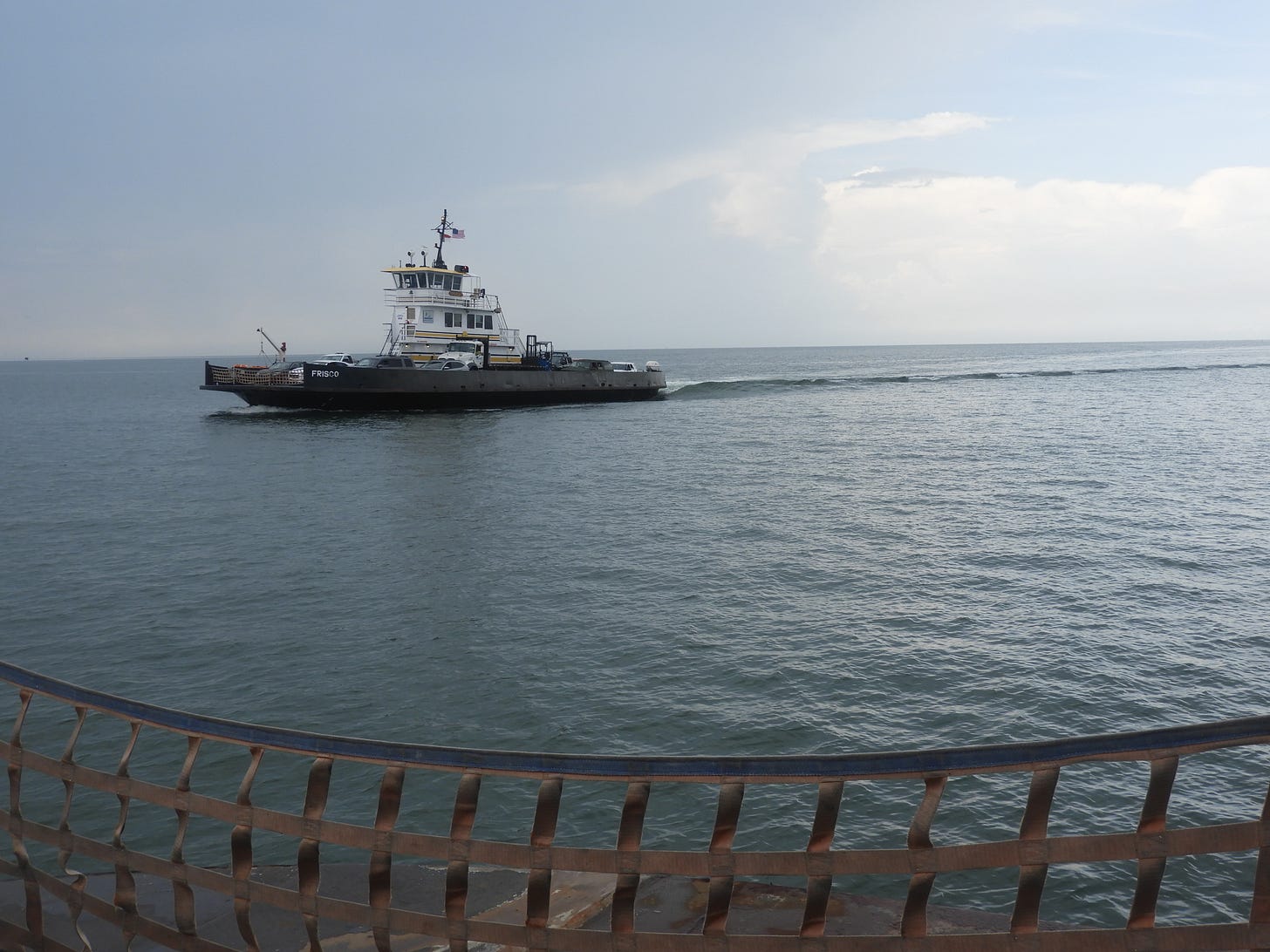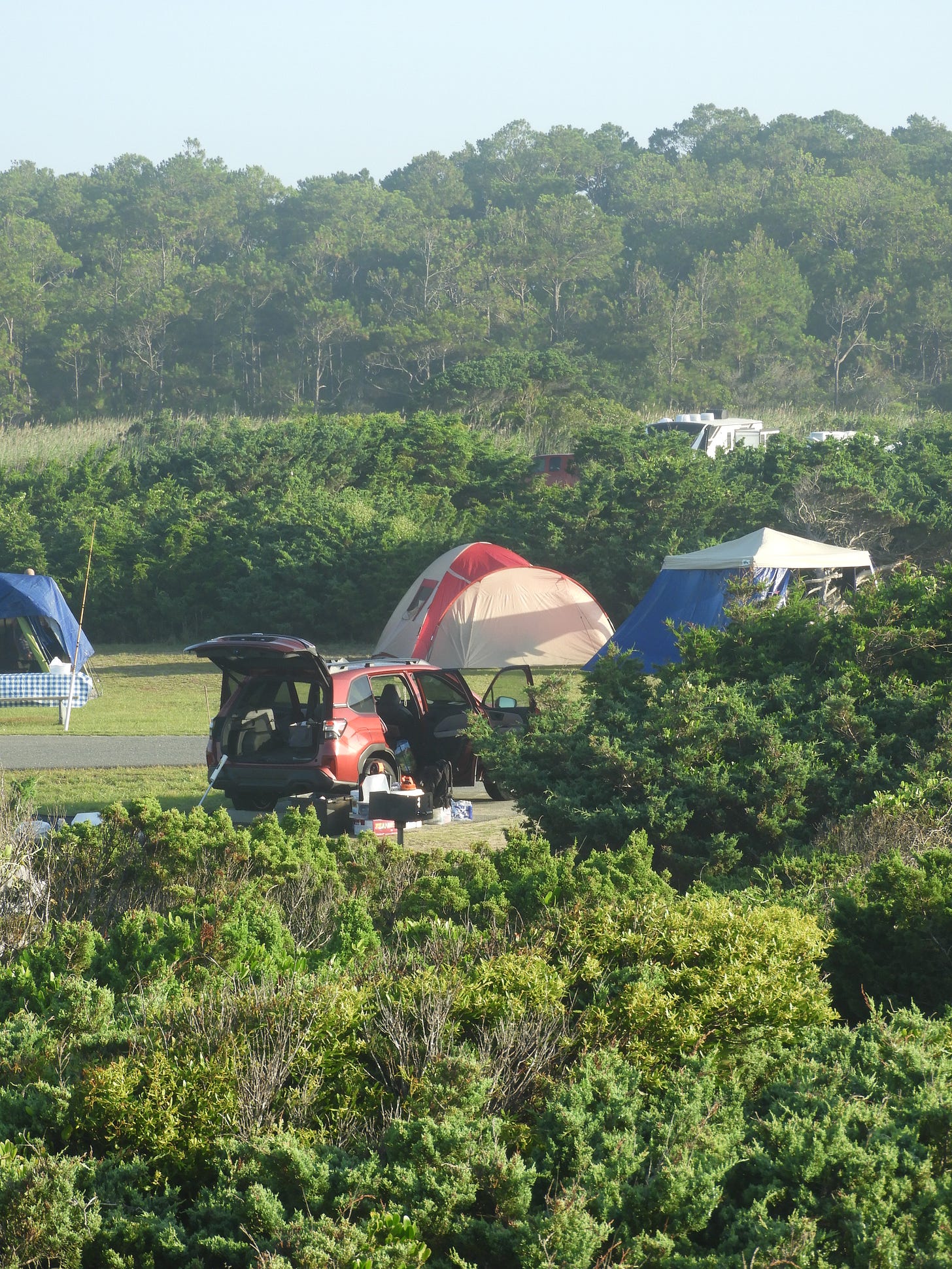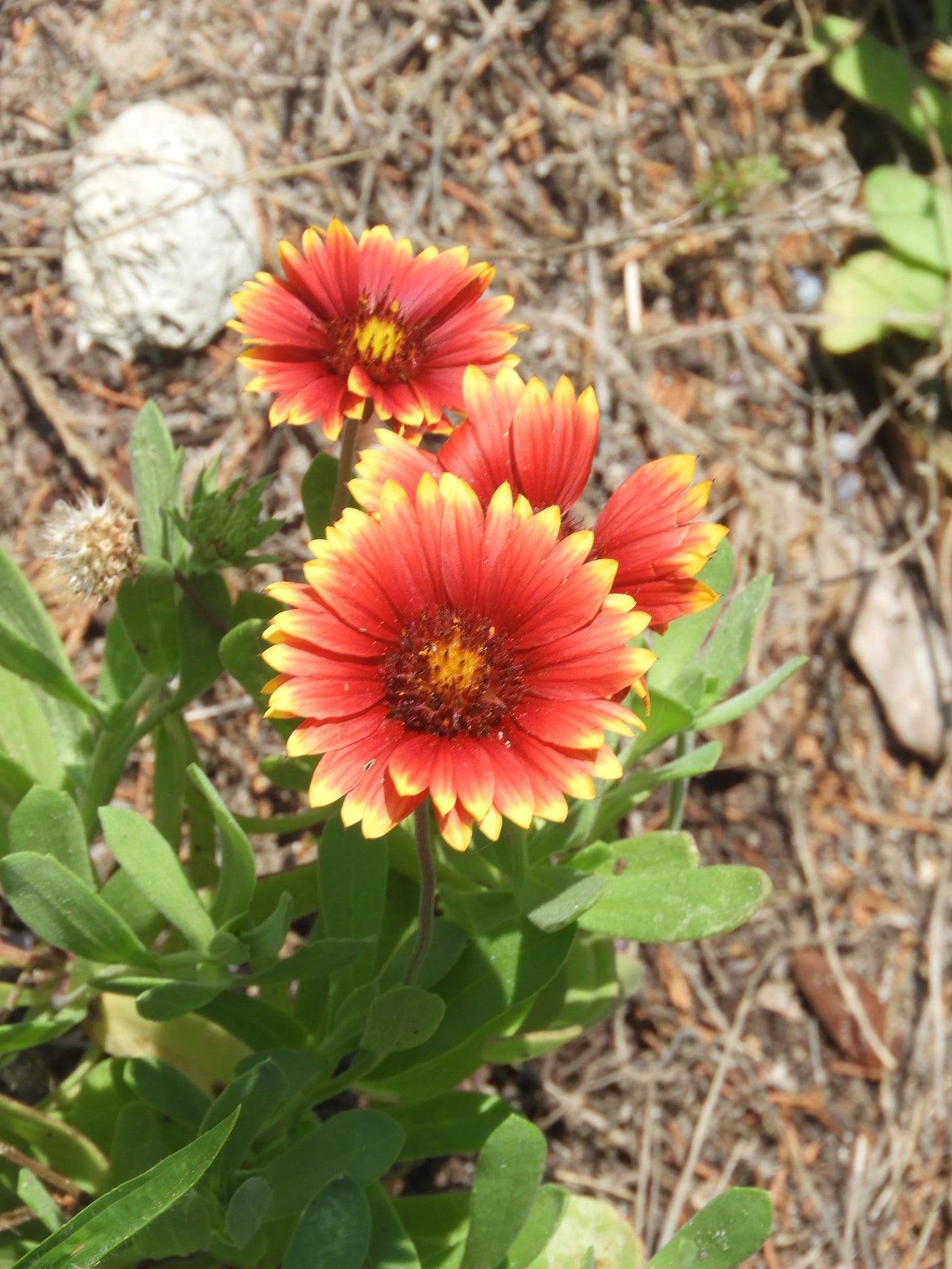This may be brief. Or at least briefer than usual. We’re camping on an island off the coast of North Carolina. And I’m in a little coffee shop with rather poor connectivity and a long line of white people getting coffee.
As much as this has been a favorite place of ours, we’d pretty much given up on camping here. It’s a rough place to camp. Hot, not much shade… constant wind and big storms that seem to arrive out of nowhere.
The island is, at its widest, a mile and a half wide and thirteen miles long. There’s a village on one end that hugs a perfect little harbor. Pirates used to frequent the area and as legend has it, Blackbeard and his crew were finally surrounded out at sea, not far from a cove on the island where they frequently hid out. Apparently, Blackbeard was shot and beheaded and thrown overboard… his headless body swam around the ship three times.
At any rate, my initial urge to visit this island, and the islands along the shore of North Carolina, were spawned when I was in fourth grade. Our reader was a kind of union of social studies and reading skills, and the book, “Runaway Home”, told the story of a family in Maine whose father was an artist out of work. He was offered a job by a family member across the country in the Northwest. So, the family packed up and took the long way around the coasts and southern borders of the country, trailer-hitched and made the long journey to Washington state. One of the stops along the way was the Outer Banks. I’d been intrigued by the place ever since, and Susan, Clayton and I made our first trip to Ocracoke Island in the mid 1980s, when the village still retained much of its small fishing village feel and many of the locals spoke in an entirely unique accent unlike any other… more like old English than any other southern accent. Apparently that accent is nearly extinct, as is the fishing industry. Tourists swarm the narrow streets, and every time a hurricane takes out another old residence or store, a taller, albeit, often enough, shingle-sided structure takes its place. It’s hard to know how many people still live here… so many of the homes advertise Vacation Rental signs.
But here we go. A few pics from the place… before it completely vanishes… not an impossibility with the increasing tides and devastating higher and higher waters during tropical storms and hurricanes.
Apparently, the Ocracoke lighthouse is the oldest lighthouse along the North Carolina coast. It’s not that tall, but these are lowlands and there are out of the way places, deep in the sawgrass wets outside of the village, where the lighthouse sticks up above the small wickedly shaped yaupon and live oaks that are endemic to the island.
During hurricane Dorian, in 2019, the old lighthouse keeper’s house, built in stages during the 19th century, and the lighthouse were flooded and seriously damaged (the current tower was built in 1823 after a series of older beacons were replaced). The effort now is to raise the entire keeper’s house in anticipation of increased frequency of similar storms and floods. The beautifully sculptured little live oaks that surround the house are now all being held together by wire and planks. There was no one around this project when we stopped there. Another victim of the draconian cuts to the National Park system?
These are like the many disappointing things that the passage of time manages to impose on a place that one has loved and that figures largely in one’s own personal mythology.
But the seas and the beaches are pretty much the same, thank god for the national park system, whatever its faults.
I managed some fine body surfing yesterday… in spite of the rough, choppy seas and the hard pull of the stubborn undertow. I’m hoping for less serious waves today.
The condo culture here is much the same as anywhere else where small town and village industry and self-sufficiency is forced through a number of eventualities to be given over to an increase in day trippers and people who can afford second homes. To tell you the truth, renting a vacation spot here has even surpassed our budgetary abilities. Twice we rented a little house up on stilts more than ten years ago. That house is gone now… maybe another victim of the incessant storms that ravage the island. We are hesitant to rent a place again at the prices required… so we thought we would camp again. We had some concerns due to Susan’s health issues and the harsh (though often exciting) camping environment, but thought we’d give it a go.
Speaking of harsh camping: our first night here was punctuated by a fierce storm that woke us with a bang in the early hours of the morning. The bang from the wind shear and thunder with a sudden torrential rain woke us out of our post road trip slumber. The tent shook and twisted, and the rain was thunderous for quite a while. Of course, being the old man I am, I had to pee in the middle of this torrential downpour. In the end, the tent held up nicely, we stayed dry and went back to sleep just before dawn as the mockingbirds and nightjars started singing. This reminded us of a camping trip we took here in the 80’s when, as we were crabbing on the other side of the island, the sunny sound side, a waterspout came through the campground and tore apart many of the tents and other camping shelters. We were fortunate, having set up in a more sheltered area, our stuff suffered little damage… but the wind howled the rest of the night.
The big change happened here between our camping visits in the 1980s and our return visits in the early 2000s when suddenly there seemed to be an invasive species eruption in the village. Golf carts were everywhere.
This was too much like the lake side city where we live. As much as we remember our past visits very fondly, that time is past.
Of all the Outer Banks islands, Ocracoke is the most stabilized. Most of us have seen the coverage of the homes that are crashing into the sea on the island north of Ocracoke… but this was expected, really. The entire nature of the way barrier islands work consists of constant movement that defies permanence. We recall traveling down the islands to the ferry that took us to Ocracoke and seeing, back in the 1980s, tall, stilted homes being built rapidly on vary narrow areas of those islands and predicting that they would soon be swept away by the sea.
Ocracoke, because of the way it sits just west of the Gulf Stream, stretching along a northeast to southwest axis, has many attributes of stability that the other outer banks islands do not. One of which is an old growth forest. Well… maybe not old growth, but protected for many years. It frightens me that this magical forest might some day be wiped away, or irreparably damaged by rising waters.
Bizarre phenomenon of the past 20 years or so. People leave clothes everywhere, never to retrieve them. I’ve noticed this in the locker room at the pool where I swim. This seems bizarrely wasteful. Clothes becoming worthless. All these t-shirt shops. Second hand stores. Clothes left on the floor of the cold water showers at the campground. Hats and bathing suits.
Hey… inasmuch as I don’t leave my clothes in such places, I do have many, many more shirts than I need! How did I get so many shoes? There was a time when one or two pair were my limit. Converse All Stars were all purpose shoes… until they shipped the manufacture of those shoes overseas, promising cheap prices that, nonetheless, now edge toward a hundred dollars when thirty years ago, when they were still made in the USA and were edging up toward twenty dollars, I complained that I would never spend that much. They were great hiking shoes… for Michigan hiking and backpacking… but now they seem to have lost that comfort and durability quotient.
What does that have to do with Ocracoke? Hm. Just a little tangent, after seeing the numbers of articles of clothing in the cold-water showers at the campground. Don’t shiver… those cold-water showers are exactly what’s required in this sultry, sandy, windy place.
There are few people manning the national parks much anymore. At this campground all registration, reservation and check-ins are done online or without any face-to-face interaction. This was already happening in the parks system prior to the current political circumstances. along with prices making lodging, camping, and even visiting, beyond many working people’s income limitations…. but the recent cuts to funding have made it even worse. And I miss that interaction. I miss the presence of expert knowledge of the parks, of various creatures and weather patterns, I miss that human link. I don’t understand the preference for human-less interaction. It is not nearly as efficient in many ways, and it contributes to the scourge of loneliness and loss of basic interactional skills that community absolutely requires.
These parks and what are becoming high-end resort communities nearby, carved out of one-of-a-kind unique little outlier villages, as well as the increasing preponderance of deserted small towns that are otherwise emptied by the presence of freeway intersections and Walmarts, are alarming and sad.
And all the American parks and resorts communities are so Caucasian! That the level of overt shows of friendliness reach incredible levels in these places increasingly strikes me as a demonstration of racist prerogative. How is it white people feel so safe away from those they have routinely dehumanized and victimize? These friendly behaviors are rarely displayed in more urban and diverse places. Of course, there are exceptions. Of course. But largely these come from communities that have made conscious decisions and acts to embrace diversity and reject the formal and informal redlining of the past.
The flower below is a Gaillardia species and is found all over the island in sandy barren areas. We have a domesticated variety in our gardens, called blanket flower.











